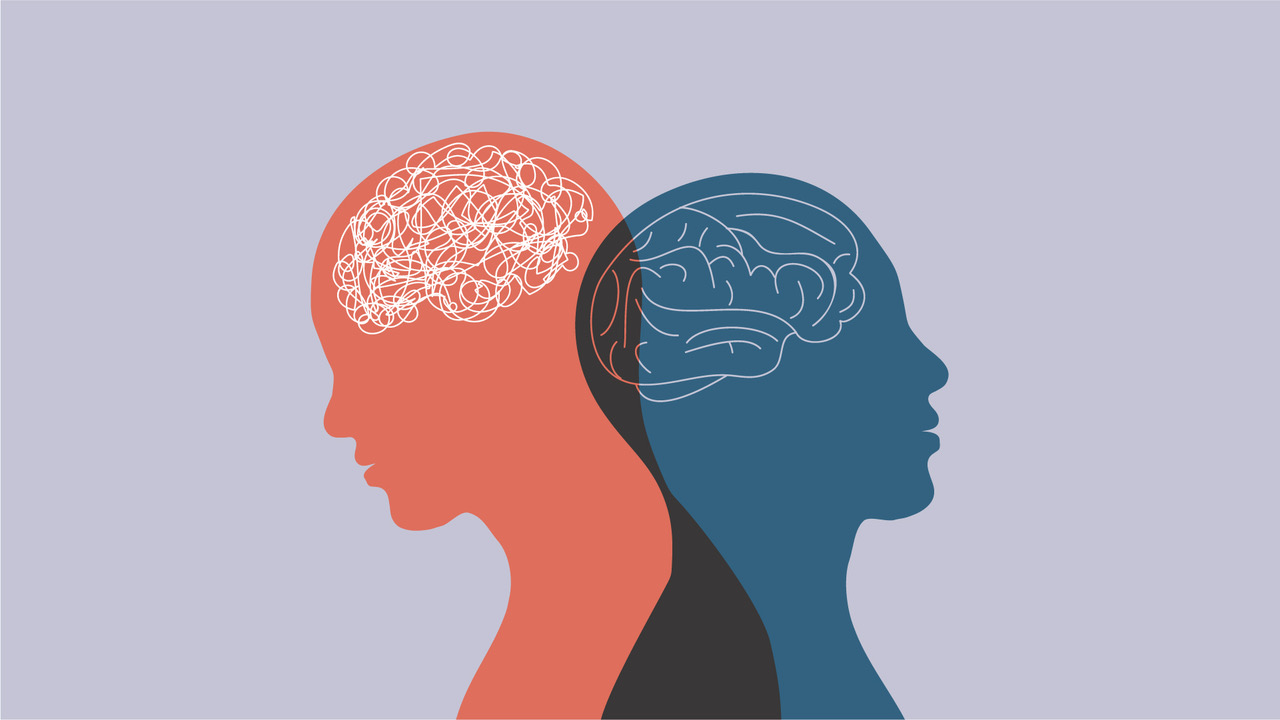What is
Bipolar?

Bipolar Disorder
Bipolar disorder, formerly known as manic-depressive illness, is a chronic brain condition that leads to unusual shifts in mood, energy, activity levels, and the ability to perform daily tasks. These mood swings go beyond the regular ups and downs that everyone experiences and can significantly disrupt a person’s life. Without treatment, bipolar disorder can cause severe challenges, such as difficulties in work or school, strained relationships, and increased risk of self-harm or suicide. The good news is that bipolar disorder is treatable. With proper management, individuals with this condition can lead full, productive, and fulfilling lives.
Key Facts About Bipolar Disorder
- Prevalence: Approximately 5.7 million American adults (2.6% of the population) are affected by bipolar disorder annually.
- Age of Onset: Symptoms typically begin in late adolescence or early adulthood, but cases in childhood or late adulthood are also possible.
- Recognition and Diagnosis: It often goes unrecognized for years, delaying proper treatment.
- Chronic Nature: Similar to diabetes or heart disease, bipolar disorder is a lifelong condition that requires ongoing management.
Symptoms of Bipolar Disorder
Mania Symptoms
Mania is characterized by periods of excessively elevated mood, energy, and activity. A manic episode is diagnosed if at least three of the following symptoms are present most of the day for one week or longer:
- Excessive energy, activity, or restlessness
- Euphoria or an excessively "high" mood
- Extreme irritability or agitation
- Racing thoughts and rapid speech
- Decreased need for sleep
- Inflated self-esteem or grandiosity
- Poor judgment and impulsive behavior (e.g., spending sprees, risky activities)
- Increased sexual drive
- Substance abuse (e.g., alcohol, drugs)
- Aggressive, intrusive, or provocative behavior
- Denial of symptoms

Depression Symptoms
During depressive episodes, individuals may experience:
- Persistent sadness or feelings of hopelessness
- Loss of interest in activities once enjoyed
- Fatigue or lack of energy
- Changes in appetite or weight
- Trouble sleeping or oversleeping
- Difficulty concentrating or making decisions
- Feelings of worthlessness or excessive guilt
- Thoughts of death or suicide
- Unexplained physical symptoms (e.g., chronic pain)
Types of Bipolar Disorder
- Bipolar I Disorder: Defined by at least one manic episode that may be preceded or followed by depressive episodes.
- Bipolar II Disorder: Characterized by at least one major depressive episode and one hypomanic episode (a milder form of mania).
- Cyclothymic Disorder: Involves numerous periods of hypomanic and depressive symptoms lasting at least two years (one year in children/adolescents).
- Rapid-Cycling Bipolar Disorder: Diagnosed when a person experiences four or more episodes of mania, hypomania, or depression within 12 months.
Causes and Risk Factors
The exact cause of bipolar disorder is unknown, but several factors are believed to contribute:
- Genetics: A family history of bipolar disorder increases the risk. However, it is not caused by a single gene but likely a combination of genetic and environmental factors.
- Brain Structure and Function: Imaging studies suggest that certain areas of the brain may function differently in individuals with bipolar disorder.
- Environmental Factors: Stress, trauma, or significant life changes can act as triggers for episodes.
Treatment and Management
Bipolar disorder requires a comprehensive treatment approach, often including:
- Medication:
- Mood stabilizers (e.g., lithium)
- Antidepressants (for depressive episodes)
- Antipsychotics (for severe symptoms)
- Therapy:
- Cognitive Behavioral Therapy (CBT)
- Interpersonal and Social Rhythm Therapy (IPSRT)
- Psychoeducation for individuals and families
- Lifestyle Adjustments:
- Regular exercise and healthy diet
- Adequate sleep and stress management
- Avoiding alcohol and recreational drugs
- Support Networks:
- Peer support groups
- Family involvement in treatment plans
The Course of Bipolar Disorder
- Bipolar disorder is a recurring condition, but effective treatment can minimize the frequency and severity of episodes.
- Without treatment, symptoms tend to worsen over time, increasing the risk of rapid cycling or more severe episodes.
Additional Insights
- Stigma and Awareness: Many individuals delay seeking help due to stigma or lack of understanding about bipolar disorder. Public awareness and education can help reduce these barriers.
- Hope for Recovery: With early intervention and proper care, individuals can regain stability and maintain a high quality of life.

Relevant Links and Information
Educational Resources
- National Institute of Mental Health (NIMH): Comprehensive information about bipolar disorder, including symptoms, causes, and treatments.
- Mayo Clinic: Detailed descriptions of bipolar disorder types, symptoms, and management strategies.
- World Health Organization (WHO): Insights into mental health and bipolar disorder on a global scale.
Support and Advocacy Groups
- International Bipolar Foundation (IBPF): Offers resources, webinars, and support for people with bipolar disorder.
- Depression and Bipolar Support Alliance (DBSA): Peer support groups, wellness tools, and educational materials.
- South African Depression and Anxiety Group (SADAG): Resources for bipolar disorder specific to South Africa.
Crisis Support Lines
- SADAG Helpline (South Africa): Call 0800 567 567 for immediate assistance.
- Befrienders Worldwide: Find crisis hotlines in your country.
- Crisis Text Line: Text HOME to 741741 (U.S.) or find international options on their site.
Online Screening Tools
- Psychology Today Bipolar Test: A quick self-assessment tool for symptoms of bipolar disorder.
- Mental Health America Screening: Free tools for identifying mental health conditions, including bipolar disorder.
Self-Help Apps and Tools
- Mood notes: A journaling app to track mood and identify triggers.
- Stigma-Free Me: A mobile app providing local resources for substance abuse recovery, mental health support, and housing.
- Daylio: A micro-journaling app to log daily activities and mood swings.
Scientific Research and Articles
- PubMed Bipolar Disorder Studies: Access thousands of peer-reviewed studies on bipolar disorder.
- Harvard Health Publishing: Articles on bipolar disorder and mental health.
- NIH Brain Imaging Studies: Explore how brain imaging research is improving our understanding of bipolar disorder.
Books and Guides
- “The Bipolar Disorder Survival Guide” by David J. Miklowitz: A practical book for understanding and managing bipolar disorder.
- “An Unquiet Mind” by Kay Redfield Jamison: A memoir offering insight into living with bipolar disorder.
- “Bipolar Disorder Workbook” by Monique Belton and Louisa Grandin Sylvia: Exercises for mood management and self-care.
Videos and Podcasts
- TED Talk: “My Journey with Bipolar Disorder” by JD Schramm
- “The Hilarious World of Depression” Podcast: Focuses on mental health, including episodes about bipolar disorder.
- YouTube Channel: DBSA: Videos about managing bipolar disorder and personal stories.
"Though I am often in the depths of misery, there is still calmness, pure harmony and music inside me. ― Vincent van Gogh"